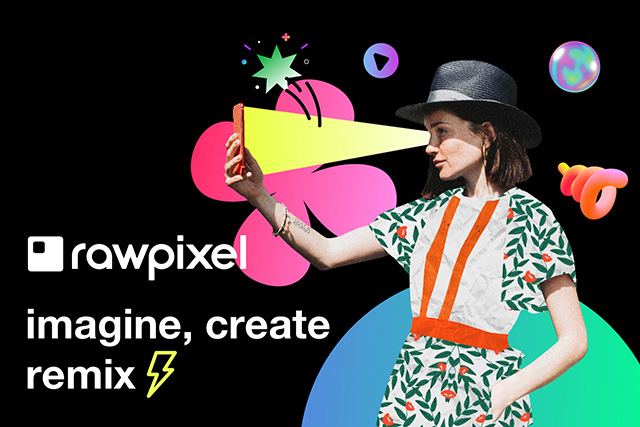Natural Materials: Embracing Sustainable Design Elements
Introduction
Hey there, fellow design enthusiasts!
Remember that earthy feeling you get when you walk barefoot on grass, or the calming scent of a freshly cut forest? Turns out, that good ol' Mother Nature isn't just good for the soul – she's got a treasure trove of design goodies waiting to be discovered!
We're talking about natural materials, the sustainable superstars taking the graphic design world by storm. From woodsy textures to recycled paper goodness, these eco-friendly gems are adding a touch of organic magic to everything from logos and packaging to websites and even fancy pants signage. ✨
But why the sudden love for nature's bounty, you ask? Well, it's not just about the earthy vibes (although, those are pretty awesome). It's about embracing sustainability, reducing our environmental footprint, and creating designs that are as good for the planet as they are for the eye.
So, buckle up, design adventurers! Because in this post, we're diving headfirst into the wonderful world of natural materials. We'll explore the reasons behind their rise to fame, uncover their hidden design superpowers, and show you how to incorporate them into your own creative projects.
Get ready to ditch the plastic and embrace the power of plants, wood, and even food scraps (seriously!). Let's go green, get creative, and show the world that sustainable design is where it's at!
Bonus Tip: Keep an eye out for some seriously inspiring examples of natural materials in action throughout this post. We're talking packaging that looks good enough to eat (but please, don't!), websites that feel like a walk in the park, and branding that'll have you hugging a tree (metaphorically, of course).
Now, let's get started on this eco-design journey, shall we?
Benefits & Beyond
Alright, design detectives, we've donned our magnifying glasses and explored the "why" behind natural materials. Now, let's dig deeper and uncover their superpowers:
1. Environmental Champions:
These materials are the sustainability squad of the design world. Think recycled paper saving trees, bamboo growing like nobody's business, and food scraps getting a second life as vibrant dyes. Plus, many are biodegradable, meaning they return to the earth without leaving a plasticy trace. Mother Nature cheers!
2. Aesthetic All-Stars:
Forget cookie-cutter designs, natural materials bring the organic flair! Imagine wood grain textures making your logo feel warm and inviting, or delicate flower illustrations adding a touch of whimsy to your packaging. These are visual textures you can practically reach out and touch.
3. Brand Builders with Bite:
Eco-conscious consumers are on the rise, and using natural materials shows you're in sync with their values. It's like whispering "Hey, we care about the planet too!" Your brand image gets a sustainability boost, and customers feel good about supporting your mission. Win-win!
But hold on, there's more! Natural materials aren't just for tree-hugging hippies and granola bars (although, they'd probably dig them too). They're incredibly versatile, popping up in all sorts of unexpected places:
Branding & Identity: Imagine a logo carved from sustainable wood, or a business card made from recycled cotton paper. Instant earth-loving vibes, right?
Print & Publishing: Magazines with earthy textures, posters splashed with botanical prints, invitations crafted from handmade paper – natural materials add a tactile dimension to the printed word.
Web & Digital Design: Websites adorned with woodgrain backgrounds, digital illustrations inspired by nature, even interactive experiences that bring the outdoors in – the possibilities are endless!
Material Magic: Wood, Whimsy, and Beyond!
We've talked about the "why" and the "what," now let's dive into the juicy details: the materials themselves! Buckle up, because we're about to embark on a whirlwind tour of nature's design toolbox:
1. Wood Wonders:
From rustic wood veneers adding warmth to logos to sleek bamboo packaging that screams sustainability, wood is the OG natural material. It's versatile, durable, and brings a touch of the outdoorsy into any design. Think earthy furniture catalogs, inviting restaurant menus, or even stunning website backgrounds that make you feel like you're browsing among the trees.
2. Paper Playtime:
Forget boring brochures, hello recycled paper goodness! Imagine invitations crafted from handmade paper with delicate flecks of wildflowers, or magazines with textured covers that just beg to be touched. Paper can be elegant, playful, and surprisingly sturdy, making it a favorite for everything from packaging to business cards to stunning art prints.
3. Textile Treasures:
From organic cotton tote bags that whisper "eco-conscious chic" to linen packaging that feels like a summer breeze, textiles are the soft, cozy stars of the natural material show. Think vibrant tea towels with hand-printed botanical motifs, or minimalist clothing labels made from recycled fabrics. These tactile wonders add a touch of warmth and personality to any design.
4. Stone Sensations:
Marble countertops in websites that feel luxurious, granite business cards that exude sophistication, and slate signage that whispers "ancient wisdom" – stones are the understated power players of the natural world. They add a touch of elegance, grounding, and timeless beauty to any design, from packaging to high-end branding.
5. Plant Power:
Get ready for a burst of color and life! Leaves, flowers, and even seeds are becoming unexpected heroes in the graphic design world. Imagine packaging adorned with vibrant botanical prints, websites with interactive flower animations, or invitations with delicate leaf textures. These natural elements bring a touch of whimsy, freshness, and organic beauty to any project.
Case Studies - Nature in Action!
Okay, design detectives, time to put our knowledge to the test! Let's explore some real-life examples of how natural materials are captivating audiences and pushing the boundaries of sustainable design:
1. Packaging Prowess:
Patagonia's Black Hole duffel bag: Crafted from recycled nylon and bluesign®-approved materials, this durable bag proves eco-conscious gear can be stylish and functional.
Tony's Chocolonely's limited-edition chocolate bars: Wrapped in colorful, hand-painted recycled paper, these bars showcase how natural materials can add personality and storytelling to packaging.
Food Hugger's silicone food wraps: A vibrant alternative to plastic wrap, these reusable wraps made from natural beeswax and organic cotton show how sustainability can be both practical and visually appealing.
2. Web & Digital Wonders:
Patagonia's "Worn Wear" website: Featuring earthy textures, woodgrain backgrounds, and animations inspired by nature, this website immerses users in the brand's sustainable ethos.
The Nature Conservancy's website: Boasting interactive maps with satellite imagery and soundscapes of natural environments, this website connects users with the beauty and fragility of nature.
MiiR's online store: With a clean, minimalist layout and subtle wood grain textures, this website highlights the brand's commitment to sustainability and outdoor adventure.
3. Branding Brilliance:
Timberland's logo: The iconic tree symbol, carved from wood, perfectly embodies the brand's connection to nature and its commitment to sustainable practices.
Dr. Bronner's Magic Soaps: Vibrant labels made from recycled paper with playful hand-drawn illustrations showcase the brand's quirky personality and natural ingredients.
Allbirds' sneakers: Made from natural wool and tree fiber, these stylish shoes prove that eco-friendly materials can be fashionable and high-performance.
These are just a glimpse into the vast world of natural materials in graphic design. Remember, the possibilities are as endless as the imagination itself!
Embracing the Challenge, Embracing Nature
Alright, design adventurers, we've seen the beauty and potential of natural materials, but let's be real – they're not always sunshine and rainbows. So, let's dive into the challenges and considerations you might encounter on your eco-design journey:
Sourcing with Savvy:
Sustainability: Finding ethically sourced materials is crucial. Research suppliers, ask questions, and choose those aligned with responsible practices.
Availability: Some materials might be harder to find or have longer lead times than traditional options. Plan ahead and get creative with what's available locally.
Cost: Natural materials may come at a premium. Be transparent with clients about the value proposition of sustainability and explore cost-effective options like recycled or upcycled materials.
Designing with Diligence:
Durability: Not all natural materials are created equal. Consider things like weather resistance, lifespan, and maintenance needs when choosing for specific projects.
Printing Techniques: Some natural materials require specialized printing methods or inks. Do your research and work with experienced printers to ensure optimal results.
Functionality: Balance aesthetics with practicality. For example, a beautiful handmade paper invitation might not hold up well in rainy weather.
Embracing the Journey:
Experimentation: Don't be afraid to play and try new things! The beauty of natural materials lies in their unique textures and variations.
Collaboration: Connect with other eco-conscious designers, sustainability experts, and suppliers. Knowledge sharing and collaboration can open new doors and overcome challenges.
Education: Be a champion for sustainable design! Share your knowledge, showcase inspiring projects, and educate clients and consumers about the benefits of using natural materials.
Remember, embracing natural materials is not just about a design choice, it's a commitment to a more sustainable future. By navigating the challenges with creativity and perseverance, you can create stunning, earth-friendly projects that leave a lasting positive impact.
Go Green, Design Bold!
So, there you have it, fellow design enthusiasts! We've explored the why, the what, and the how of natural materials in graphic design. We've seen their power to inspire, their ability to connect us to nature, and their potential to reshape the future of design towards a more sustainable path.
But this journey doesn't end here. It's a call to action, a trumpet sounding for all creatives who believe that beauty and responsibility can coexist.
Here's how you can join the movement:
Dive into the deep end: Research, experiment, and embrace the challenges of working with natural materials. The rewards are worth it!
Spread the word: Share your eco-design projects, talk about the benefits of sustainable materials, and inspire others to join the green revolution.
Support eco-conscious businesses: Choose brands that prioritize sustainability and use their voices to demand change in the industry.
Embrace imperfection: Natural materials come with quirks and variations. Celebrate them! They add authenticity and character to your work.
Keep learning, keep growing: This is a dynamic field, constantly evolving with new discoveries and innovative uses of natural materials. Stay curious, stay inspired!
Remember, every project, every choice, makes a difference. Together, we can use the power of design to create a future where nature and creativity flourish hand-in-hand. So, grab your pencils, open your minds, and go green, design bold!
Let's leave a legacy of breathtaking visuals, sustainable practices, and a world where design embraces the beauty and wonder of the natural world. The future is green, and it's waiting for us to paint it with creativity and care.
Tags
Subscribe
Join the Advise Graphics community and get exclusive design resources, tips, and updates delivered straight to your inbox.
Quick links
Copyright
© 2025 Advise Graphics. All rights reserved.
Cop© 2025 Advise Graphics. All rights reserved.











